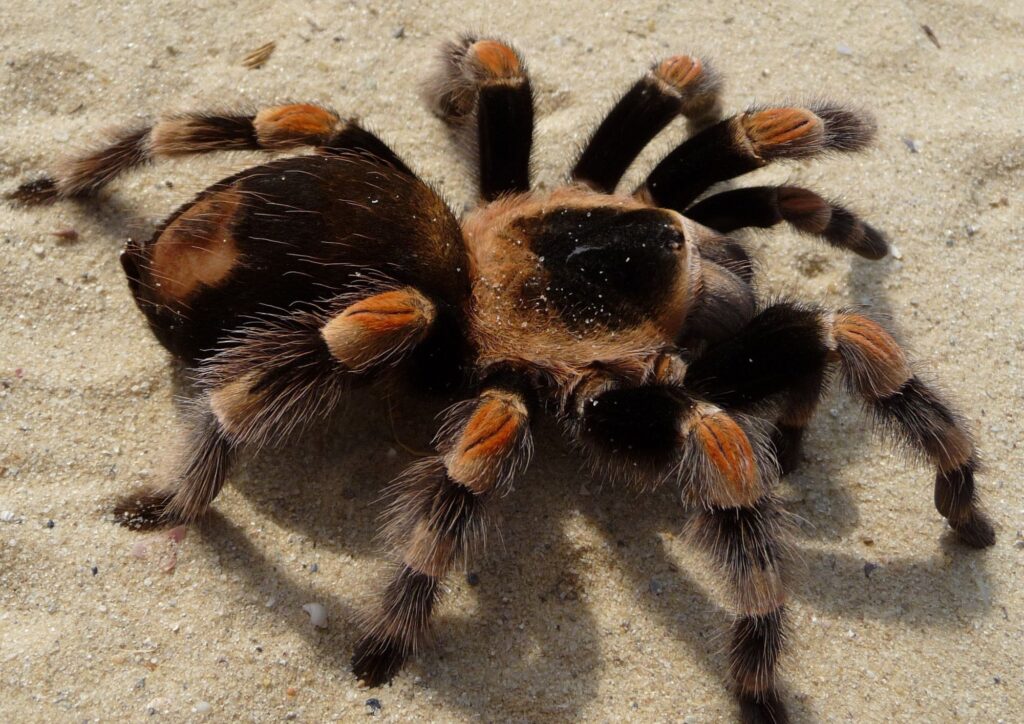Can Spiders Be Pets? The Truth About Tarantula Keeping
Spiders as Pets—Strange or Smart?
When people think of pets, they picture dogs, cats, or maybe fish—not eight-legged, hairy creatures hiding in a terrarium. But for a growing number of exotic pet lovers, tarantulas are becoming a top choice for quiet, low-maintenance companions.
So, can spiders be pets? The short answer: Yes, but not just any spider. In this article, we’ll explore the pros and cons of keeping tarantulas, how to care for them, and whether this misunderstood arachnid is the right pet for you.

Why Tarantulas (Not Just Any Spider)?
While many spiders are too small, fragile, or venomous to be kept as pets, tarantulas are a popular choice because they are:
- Larger and easier to observe
- Generally docile (some species)
- Low-maintenance and quiet
- Less dangerous than people think
There are over 1,000 tarantula species, but only a few dozen are commonly kept as pets.
Popular Pet Tarantula Species:
- Chilean Rose Hair (Grammostola rosea) – calm and beginner-friendly
- Mexican Red Knee (Brachypelma hamorii) – beautiful and docile
- Pink Toe Tarantula (Avicularia avicularia) – arboreal and active
Pros of Keeping a Tarantula as a Pet
- Low Maintenance
Tarantulas eat infrequently (about once a week), don’t need daily attention, and require minimal cleaning. - Space Efficient
A simple terrarium the size of a shoebox can house a tarantula comfortably. - Quiet and Odor-Free
They don’t bark, meow, or stink—perfect for apartments or dorms. - Affordable Care
After the initial setup, food (like crickets or mealworms) and upkeep are cheap. - Fascinating to Watch
Their movements, web-spinning, and molting behaviors are hypnotic and educational.
Cons and Challenges
Lifespan
Female tarantulas can live up to 20 years, so keeping one is a long-term commitment.
Not Cuddly
Tarantulas are not interactive pets. Most dislike handling and may become stressed or defensive.
Handling Risks
While tarantula bites are rarely dangerous to humans, they can flick urticating hairs that cause skin or eye irritation.
Molting Problems
Tarantulas shed their exoskeleton to grow. If conditions aren’t right (like humidity), molting can be fatal.
Escape Artists
A loose tarantula in the house is no fun for anyone—make sure enclosures are secure!
Are Tarantulas Dangerous?
For most people, pet tarantulas are safe. Their venom is mild (less than a bee sting), and they rarely bite unless provoked. However:
- Children should not handle them
- People with severe allergies to insect bites should use caution
- Always research species-specific behaviors before choosing a tarantula
Fun Fact
Tarantulas don’t use webs to catch prey like other spiders. Instead, they ambush and pounce—then inject digestive enzymes and slurp their prey like soup!
Is a Tarantula the Right Pet for You?
A tarantula may be a great pet if you:
- Want something low-maintenance and space-saving
- Enjoy observing exotic behavior and nature
- Are okay with a pet that doesn’t cuddle or play fetch
- Don’t mind feeding live bugs
But they’re not ideal if you:
- Want a highly interactive or emotional bond with a pet
- Have small children or other pets that may interfere
- Are uncomfortable with insects or spiders
Conclusion: A Quiet, Unusual, and Fascinating Pet
So, can spiders be pets? Yes—but tarantulas are the best fit for that title. They’re fascinating, affordable, and surprisingly easy to care for. For the right person, a tarantula isn’t just a pet—it’s a living window into one of the most misunderstood creatures on Earth.
With the right research and respect, tarantulas can make calm, low-drama companions that quietly sit at the edge of wild and wonderful.








